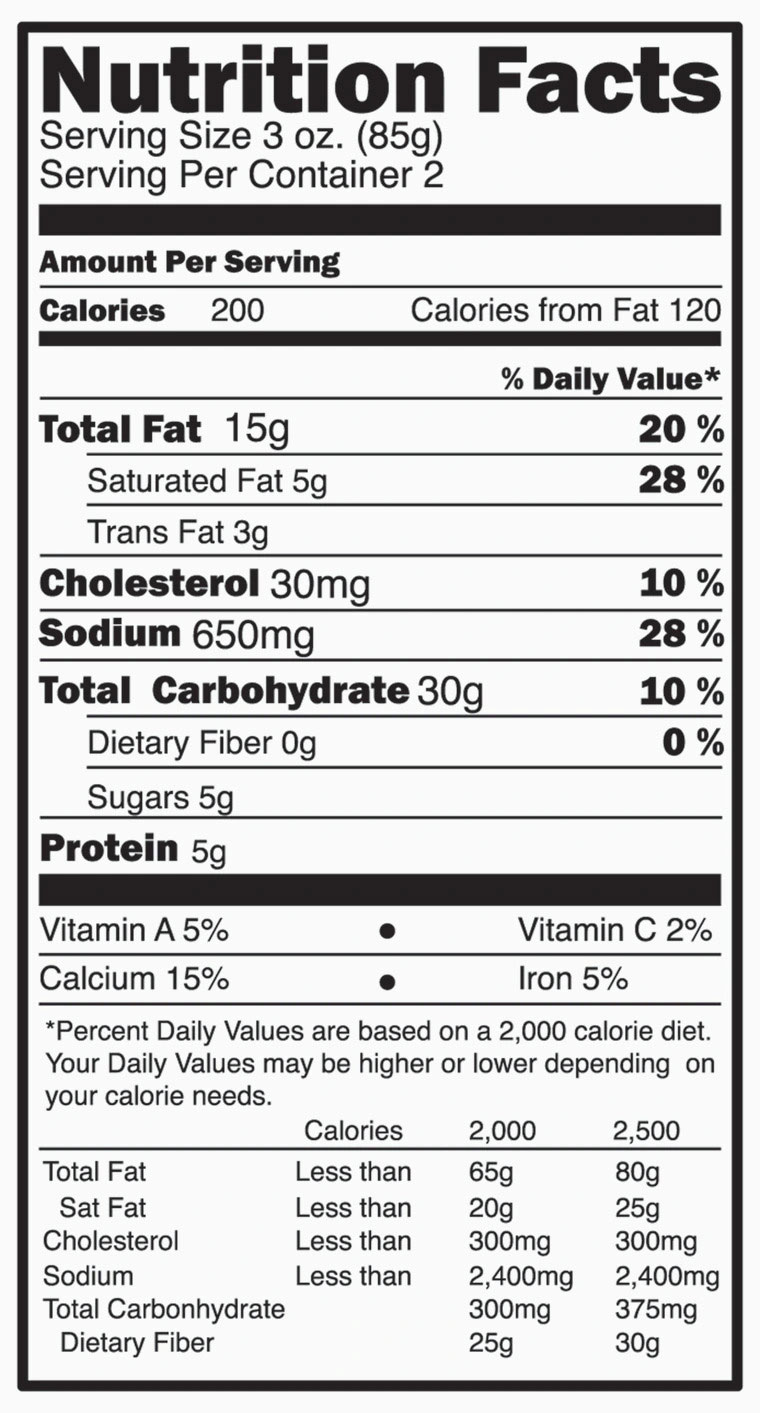H Healthy Eating Basics
Decoding Nutrition Labels: Empowering Healthier Choices for a Balanced Diet
By
Beauty Doctor MD August 23, 2023

In the modern world of food abundance and convenience, deciphering the information presented on food labels has become crucial for making informed and health-conscious choices. Reading food labels is akin to unlocking a treasure trove of insights into the nutritional value of what we consume. This comprehensive guide dives deep into the world of food labels, unraveling their significance, components, and the pivotal role they play in fostering a healthier and more balanced diet.
Understanding Food Labels

Food labels serve as a window into the nutritional composition of packaged foods and beverages. They provide essential information about serving sizes, calories, macronutrients, and more:
- Serving Size: The recommended portion size for consumption.
- Calories: The amount of energy provided by one serving.
- Macronutrients: Information about carbohydrates, proteins, and fats.
- Micronutrients: The presence of vitamins, minerals, and other beneficial nutrients.
- % Daily Value: Indicates how much a nutrient in a serving contributes to a daily diet.
The Role of Food Labels in Health:
- Informed Choices: Food labels help consumers make healthier choices by providing insight into the nutritional content of foods.
- Portion Awareness: Labels enable portion control by displaying recommended serving sizes and calorie counts.
- Dietary Considerations: Labels assist those with specific dietary needs or restrictions in selecting suitable foods.
Deciphering Nutrition Claims
Food labels often feature nutrition claims that highlight specific attributes of a product:
- Low-Fat: Contains a reduced amount of fat compared to regular versions.
- High-Fiber: Provides a significant amount of dietary fiber, supporting digestive health.
- Reduced Sodium: Contains less sodium compared to standard versions.
- Organic: Certified organic products meet specific standards for farming and production practices.
Understanding Ingredients Lists
Ingredients lists detail the components of a food product in descending order of quantity:
- Whole Foods: Look for products with recognizable, whole-food ingredients.
- Sugars and Additives: Identify added sugars, artificial colors, and preservatives.
- Allergens: Check for allergens like nuts, dairy, and gluten if you have sensitivities.
Strategies for Making Healthier Choices
- Focus on Nutrients: Prioritize foods rich in nutrients and choose products with higher % Daily Values for vitamins and minerals.
- Limit Added Sugars: Select products with minimal added sugars, opting for natural sweeteners when possible.
- Sodium Awareness: Choose products with lower sodium content to support heart health.
- Ingredient Quality: Opt for foods with simple, whole-food ingredients and avoid artificial additives.
- Balanced Macronutrients: Aim for a balance of carbohydrates, proteins, and fats to support overall nutrition.
Navigating Common Pitfalls
- Portion Distortion: Be mindful of portion sizes and consume according to the recommended serving size.
- Misleading Claims: Analyze nutrition claims carefully, focusing on the overall nutritional value of the product.
- Hidden Sugars: Look for alternative names for added sugars, such as high-fructose corn syrup or cane sugar.
Incorporating Food Labels into Daily Choices
- Meal Planning: Use food labels to plan balanced meals that align with your nutritional goals.
- Snack Selection: Make smarter snack choices by assessing calorie and nutrient content.
- Restaurant Dining: When dining out, inquire about nutritional information or opt for healthier menu items.
Expert Insights on Reading Food Labels
- Registered Dietitian Consultation: Seek guidance from a registered dietitian to interpret food labels and make personalized choices.
- Holistic Approach: Use food labels as part of an overall healthy eating strategy that includes whole, unprocessed foods.
Conclusion
Reading food labels is not merely a task; it is an empowering journey toward nourishing our bodies and minds. By deciphering the information presented on labels, we unveil the nutritional secrets of the foods we consume, equipping ourselves with the knowledge to make health-conscious choices. As we navigate the complex landscape of food options, let us embrace the power of food labels to guide us toward a balanced and vibrant diet. With each label scrutinized, each ingredient understood, and each choice made mindfully, we cultivate a sense of empowerment that resonates through our lives, nurturing our well-being, and fostering a harmonious relationship with the foods we cherish.

